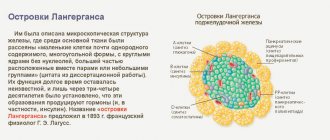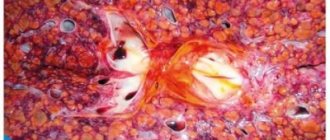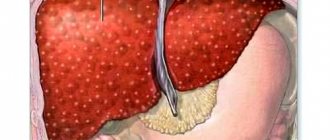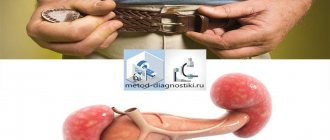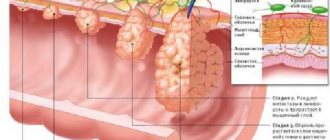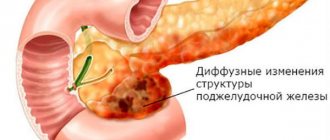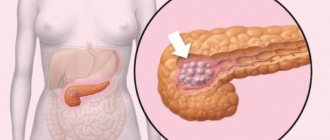Material reviewer
Malignant tumors affecting the pancreas are extremely rare - only 3% of the total number of tumors. At the same time, this form of oncology is extremely lethal (5th place among other types). Survival statistics indicate a dismal 3% of patients exceed the 5-year barrier. At inoperable stages of pancreatic cancer, the median life of patients is determined within 4 months.
Description of the disease
Of the 19 morphological variants of pancreatic tumors, every third has a completely or partially adenocarcinoma structure. Of all malignant diseases, pancreatic cancer accounts for just over 3%.
In Russia, almost 16 thousand primary patients are identified annually, that is, 12 out of every 100 thousand. Mostly mature citizens are affected, and in women, cancer occurs on average 6 years later - after the 70th birthday. The lowest incidence is among Cypriots; carcinoma most often affects Hungarians and Finnish women.
Forecasts for the fourth stage
At the most severe stage, oncology is diagnosed in more than half of patients. The cancerous process completely affects nearby organs of the abdominal cavity. Pancreatic cancer with metastases to the liver, lungs and kidneys is also observed. Damage to the brain and bones often occurs. The course of the underlying disease is aggravated by the formation of severe intoxication, diabetes and the accumulation of large amounts of fluid in the abdomen. In such cases, the prognosis is always unfavorable.
How long you can live with stage 4 pancreatic cancer directly depends on the degree of spread of metastases to other organs, the manifestation of pain, the general condition of the patient and the body’s response to chemotherapy. Even with intensive treatment, it is quite rare for a person to survive one year. Survival often ranges from four months to six months. All this time, supportive drug treatment is carried out, which does not cure the cancer.
Prognosis for life expectancy for pancreatic cancer, in addition to the above factors, often depends on the age category of the patient. Often this diagnosis is made to people over sixty years of age. For this reason, in some cases it is not possible to perform surgery even if the disease is detected in the first stages of development. Therefore, life expectancy will be just over one and a half years.
Recently, experts in the field of gastroenterology have noted that the diagnosis of this disease is increasingly observed in middle-aged people starting from the age of thirty.
Similar materials
Pancreatic cancer is a malignant neoplasm that affects the mucous membrane and then penetrates into the deeper layers of this organ. This type of oncology is quite common - it affects people over thirty years of age, but the peak incidence occurs in the age group over seventy. Men suffer from this disease several times more often than women.
Cancer of the head of the pancreas is the formation of a malignant neoplasm in the area of the ducts and acini on the head of the organ. The pathology is very dangerous, since it is almost impossible to detect in the first stages of development, when surgical intervention will be most effective, will help eliminate the disease and provide a favorable prognosis. More often, cancer of the head of the pancreas is diagnosed in representatives of the stronger half of humanity. Scientists cannot say what is causing this trend.
Pancreatic cancer is one of the most common lesions of this organ, which entails a high mortality rate. A malignant neoplasm can be found on the head, tail or body of the pancreas. Often the disease develops against the background of a weakened immune system or chronic disorders associated with the gastrointestinal tract. According to medical data, oncology of this organ is diagnosed more in men than in women. The main risk group is people over sixty years of age. This disease occurs in several stages, each of which is characterized by its own specific symptoms.
Pancreatic cancer is a disease that is quite common and has a high mortality rate. Depending on the location of the pathogenic process, cancer of the head, tail and body of the pancreas is distinguished. A characteristic feature of the disease is that it is diagnosed several times more often in men than in women. The risk group includes people over sixty years of age. Symptoms of pancreatic cancer appear depending on the stage of the disease. In the early stages of formation, such a disease may not be expressed by any symptoms at all, since the tumor is small in size, which is why a person does not feel a deterioration in his general condition. The first signs of the disorder are minor pain, unmotivated weakness, and discomfort in the abdominal area. A specific manifestation of the disease is that at the beginning of its formation it can be expressed by symptoms similar to diabetes mellitus.
Esophageal tumors are benign or malignant neoplasms that form from various layers of the walls of this organ, characterized by slow progression. Oncological tumors are several times more common than benign ones. This is due to the fact that some of them can transform into cancer.
Survival for pancreatic cancer is an individual concept. Its indicators depend on the specific case. The stage of the oncological process, the patient’s age, the general condition of the body, and the strength of the immune system play a role. For this reason, experts can only give approximate forecasts (how long they live with pancreatic cancer), based on the clinical picture and statistical information. Also, the quality of therapy is extremely important. If surgery is successful and the lesion is removed in a timely manner (before the onset of metastasis), therapy can give a good result: the five-year survival barrier is overcome without relapse.
Causes
Only every tenth pancreatic adenocarcinoma has a genetic background and is associated with congenital syndromes, where pancreatic tumor is one of the symptoms.
It has been noted that the likelihood of developing adenocarcinoma increases with alcohol abuse and smoking, diabetes and obesity, low physical activity and a lack of vitamin D3 in the body, from which a complete vitamin is synthesized. For those suffering from chronic pancreatitis, the chances of developing pancreatic adenocarcinoma increase significantly.
Precancerous processes of the gland are known - intraepithelial neoplasia or PanIN, and its severe stage is classified as in situ cancer or stage 0. One problem is that it is difficult to detect precancerous pathology, since only a puncture allows one to get inside the organ.
Chemotherapy for pancreatic cancer - first encouraging results
R
Pancreatic cancer (PCa) is a relatively rare disease – it accounts for 3% of all malignant tumors, but is in 5th place among the most common causes of cancer mortality.
In recent decades, there has been a steady increase in incidence. In 1999, 13 thousand newly ill people were identified in Russia, and 11 thousand people died [1]. The 5-year survival rate for prostate cancer is the lowest among all tumors - 3%
, the median life of unresectable patients is about 4 months.
The peak incidence occurs in the sixth decade of life. Risk factors are smoking, diabetes, chronic pancreatitis. Tumors mainly develop from the exocrine part of the pancreas and in 80% of cases are adenocarcinoma.
The main feature of prostate cancer is late diagnosis
. The tumor gives early extensive metastasis; 90% of patients at the time of diagnosis already have a locally advanced or disseminated process, when radical surgical treatment is impossible.
Thus, with a locally advanced process, chemotherapy and/or radiation therapy, and with a disseminated process, chemotherapy are the only methods of possible treatment, however, due to the low sensitivity of the tumor, there is no standard for palliative treatment of PCa.
For many years, 5-fluorouracil
(5FU) was the drug of choice for patients who were indicated for monochemotherapy.
Based on research results from 1970–80. its effectiveness is 15–20%, but a more recent analysis showed 5FU activity to be between 0 and 14% [2]. The effectiveness of cytostatics such as mitomycin C
(mitC),
ifosfamide
(ifo),
cisplatin
(DDP) in prostate cancer is about 15% [2,3,4]. Streptozotocin and doxorubicin (Dxr) have even less activity [2]. All drugs provide only partial regression of the tumor. Combined regimens: FAM (5FU, Dxr, mitS) or SMF (streptozotocin, mitS, 5FU) – increasing the toxicity of treatment, do not improve its results [5, 6]. Hormonal treatment using tamoxifen or the somatostatin analogue octreotide has not shown any clinical significance [7].
Another serious problem in prostate cancer is assessing the effectiveness of treatment.
. Modern technical means such as computed tomography (CT) or magnetic resonance imaging (MRI), due to pronounced desmoplastic reactions, including inflammation and fibrosis in and around the tumor, do not allow measuring its extent, clarifying the localization within adjacent tissues and, therefore, , clearly interpret the response to treatment. First of all, this applies to locally advanced tumors.
Therefore, in case of prostate cancer, assessing the quality of life during palliative treatment has become one of the parameters of its effectiveness. In this case, the general condition of the patient, the intensity of pain and the amount of analgesics used are taken into account; the dynamics of body weight is of less importance.
Tumor-related pain is the leading symptom of prostate cancer and is observed in 80% of patients upon diagnosis. It has been shown that even a small decrease in tumor size during treatment, which objectively corresponds to stabilization, can be accompanied by a significant decrease in pain and the amount of analgesics used [8].
The developed system for assessing the palliative effect in prostate cancer includes: a reduction in pain by 50%, a reduction in daily drug consumption by 50%, an improvement in general condition by 20% on the Karnofsky scale and positive weight changes by 7% from the original [9]. Such dynamics of these indicators or at least one of them, for a period of at least 4 weeks, without deterioration of others, is considered as clinical improvement or clinical benefit (CB). For the first time, quality of life, as a criterion for the effectiveness of treatment, was used to evaluate the role of gemcitabine in chemotherapy for prostate cancer.
Gemcitabine
– deoxycytidine derivative. A cytostatic from the group of antimetabolites, it has antitumor activity in a number of solid tumors. The first reports of the positive effect of gemcitabine in advanced prostate cancer appeared in the early 90s. In a study by Casper et al. [10] partial tumor regression for more than 6 months was recorded in 5 out of 39 patients (13%), another 3 patients (7.7%) had a regression of less than 50%. There was a decrease in both the primary tumor and liver metastases. The effect was accompanied by a decrease in pain and an improvement in general condition. International medical examination confirmed these results.
In 1997, the final results of a cooperative comparative randomized study of the effectiveness of gemcitabine and 5FU in 126 patients, conducted in the USA and Canada, were published [11]. The objective effect during treatment with gemcitabine was 5.4%, and was not observed with 5FU. Symptomatic improvement in the group with gemcitabine was 23.8%, in the group with 5FU – 4.8%. Observation of patients for a year demonstrated the following: 18% of patients treated with gemcitabine are alive, compared to 2% treated with 5FU (p = 0.0025).
The results of other cooperative studies conducted in the USA showed a symptomatic effect in 17 of 63 patients treated with gemcitabine (27%) who did not respond to treatment with 5FU, while objective tumor regression was 10.5%. More than 6 months 31% lived for more than 9 months. – 15% and more than 1 year – 4% of patients [12]. Currently, gemcitabine is recommended as 1st line of chemotherapy for advanced prostate cancer in Russia and abroad. The generally accepted single dose of the drug in monochemotherapy is 1000–1200 mg/m2, administered by 30-minute intravenous infusion once a week for 7 weeks, then after a 1-week break on days 1, 8, 15.
Gemcitabine has minimal side effects and is well tolerated by patients. Alopecia is rare, with vomiting occurring in an average of 20% of patients. Dose-limiting toxicity: grade III–IV neutropenia. – 24–30%, thrombocytopenia grade III–IV. – about 5%, anemia grade III–IV. – about 7%.
Combination chemotherapy
Preclinical studies have shown the synergistic interaction of gemcitabine with 5FU, DDP and a number of other cytostatics. In this regard, the clinic studied double combinations of gemcitabine with 5FU, DDP, and epirubicin in patients with prostate cancer. The effectiveness of treatment in these studies varied from 5 to 21%, median time to progression - from 2.4 to 7.4 months, median overall survival - from 4.3 to 10.3 months, 1-year survival - from 9 up to 39.5% [13, 14, 15, 16, 17, 18, 19]. Gemcitabine was administered in standard doses as a 30-minute infusion, 5FU was administered as a bolus, as a 24-hour infusion, or as a continuous intravenous infusion (DVI) ± leucovorin. Standard and high doses of 5FU have been used, but no benefit was observed in the combination of gemcitabine with high doses of 5FU.
Thus, a wide range of results was demonstrated. The number of patients included in these studies varied from 26 to 66, the metastatic form of the disease ranged from 46% to 100% of the entire population, liver damage was observed in 65–87% of cases, in most cases the degree of malignancy of the tumor was not taken into account, which is one of the main prognostic factors for pancreatic ductal adenocarcinoma [20]. Interpretation of these results is difficult, and assessment of the effect of chemotherapy on survival is beyond the scope of phase II studies.
The combination of gemcitabine with docetaxel is being actively studied, which, according to some researchers, is promising [21, 22, 23].
Preliminary results of a randomized trial comparing the activity of gemcitabine monotherapy with the combination of gemcitabine + cisplatin in advanced prostate cancer have been published [24]. In both groups, gemcitabine was administered at a dose of 1000 mg/m2 on days 1, 8, 15 every 29 days. DDP was administered at a dose of 25 mg/m2 in the second group on the same days as gemcitabine. In patients receiving gemcitabine alone, the overall effectiveness of treatment was 10%, in patients receiving the combination – 42%. Clinical improvement was almost identical in both groups (45% and 38%). Other, more complex polychemotherapy regimens are also being studied. Villa et al. [25] developed a 4-component PEF-G regimen, including gemcitabine (Gem), cisplatin, epirubicin (Epi) and 5FU.
PEF-G treatment regimen:
DDP – 40 mg/m2 per day.
Epi – 40 mg/m2 per day.
Heme – 600 mg/m2 1-hour infusion on days 1 and 8.
5FU – 200 mg/m2/day continuous infusion throughout the course.
Treatment is repeated every 4 weeks. Up to a maximum of 6 courses or until disease progression (DP) or unacceptable toxicity. 43 patients were assessed, 1 complete and 24 partial tumor regressions were noted, the overall effectiveness of treatment was 58% (25/43). Stabilization (ST) was observed in 14 patients – 33%. The median duration of remissions was 8.5 months, the median time to progression was 7.5 months, and the median survival was 11 months. The clinical benefit of treatment was assessed as positive in 22 of 28 patients (78%). The toxicity of the PEF-G regimen is high: neutropenia grade III–IV. – 85%, thrombocytopenia grade III–IV. – 59%, grade III anemia. – 7%, stage III stomatitis. – 12%, diarrhea – 6%, vomiting – 6%.
Best symptomatic therapy
The best symptomatic therapy is one of the components of the entire complex of palliative treatment for advanced prostate cancer; its main methods are nutritional therapy, symptomatic treatment, and psychological assistance.
Treatment of the symptoms of the disease is carried out with the aim of improving the quality of life of patients and includes relieving abdominal pain, stopping weight loss, and reducing anorexia. The problem of providing psychological assistance to patients is very important, because PCa has a higher incidence of mental disorders than other forms of cancer. Patients fear the disease due to its reputation for being deadly and painful, and anxiety and depression often complicate the course of the disease. Table 1 presents the treatment interventions included in the term “best symptomatic therapy.”
To date, a number of randomized studies have found that palliative chemotherapy is superior in results to the best symptomatic therapy or no additional treatment (data are presented in Table 2).
So, palliative treatment for advanced pancreatic cancer includes both specific antitumor treatment and symptomatic therapy (see Table 3).

Conclusion
Pancreatic cancer is a serious disease that represents a serious problem in oncology. This is due to a number of reasons:
Pancreatic cancer is a serious disease that represents a serious problem in oncology. This is due to a number of reasons:
- increase in morbidity;
- late diagnosis (80% of patients have an advanced tumor process);
- low 1-year and 5-year survival;
- low sensitivity of the tumor to chemotherapy and radiation therapy.
Over the last decade, there has been increased interest in palliative treatment for advanced prostate cancer. This is due to the emergence of new drugs and approaches to combination chemotherapy, as well as the introduction of new criteria for assessing treatment results, taking into account parameters such as quality of life (QOL) and clinical benefit (CB).
Chemotherapy has been shown to prolong survival and improve quality of life in patients compared with best symptomatic therapy. The maximum effectiveness of chemotherapy is achieved with the use of gemcitabine, which is the first-line drug for this disease.
Currently, chemotherapy has the greatest potential in the palliative treatment of advanced PCa, while simultaneously affecting the tumor and the quality of life of patients.
Literature:
1. N.N. Trapeznikov, E.M. Axel, Statistics of malignant neoplasms in Russia and the CIS countries (state of cancer care, morbidity and mortality). Moscow 2001, 295 p.
2. O'Connell MJ “Current status of chemotherapy for advanced pancreatic and gastric cancer.” J Clin Oncol 1985; 3:1032–1039.
3. Loehrer P. et al. "Ifosfamide: an active drug in the treatment of adenocarcinoma of the pancreas". J Clin Oncol 1985; 3:367–372.
4. Wils J., Kok T., Wagener D. et al. "Activity of cisplatin in adenocarcinoma of the pancreas". Eur. J Cancer 1993; 29 A(2):203–204.
5. Smith FP, Hoth DF, Levin B, et al. "5-fluorouracil, Adriamycin and mitomycin C (FAM) chemotherapy for advanced adenocarcinoma of the pancreas." Cancer 1981; 46: 2014–2018.
6. Wiggaus RG, Wooley PV, Mac Donald JS, et al. "Phase II trial of streptozotocin, mitomycin C, and 5-fluorouracil (SM7) in the treatment of advanced pancreatic cancer." Cancer 1978; 41:387–391.
7. Cascinu S., DelFerro E., Catalano G. “Randomized trial of octreotide vs best supportive care only in advanced gastrointestinal cancer patients refractory to chemotherapy.” Br. J Cancer 1995; 71:97–101.
8. Glimelius B., Hoffman K., Sjoden P.–O., et al. "Chemotherapy improves survival and quality of life in advanced pancreatic and biliary cancer." Ann Oncol 7:593–600, 1996.
9. Fink U, Russell RC, Spittle ME, et al. "Phase II study of gemcitabine in patients with advanced pancreatic cancer." Eur. J Cancer 1993; 29 (suppl 6): 101.
10. Casper ES, Green MR, Kelsen DF, et al. "Phase II trial of gemcitabine in patients with adenocarcinoma of the pancreas." Invest New Drugs 12: 29–34, 1994.
11. Burris HA III, Moore MJ, Andersen J., et al. "Improvement in survival and clinical benefit with gemcitabine as first–line therapy for patients with advanced pancreatic cancer: A randomized trial." J Clin Oncol 15:2403–2413, 1997.
12. Rothemberg ML, Moore MJ, Cripps MC, et al. “A phase II trial of gemcitabine in patients with 5–FU–refractory pancreas cancer.” Ann Oncol 7:347–353, 1996.
13. Heinemann V., Wilke H., Mergenthaler H.–G., et al. "Gemcitabine and cisplatin in the treatment of advanced or metastatic pancreatic cancer." Ann Oncol 11:1399–1403, 2000.
14. Scheitauer W., Kornek G.V., Raderer M., et al. "Phase II trial of gemcitabine 4, epirubicin and granulocyte cololny–stimulating factor in patients with advanced pancreatic adenocarcinoma." Br. J Cancer 80: 1797–1802, 1999.
15. Hidalgo M., Castellano D., Paz-Ares L., et al. "Phase II study of gemcitabine 4 and fluorouracil as a continuous infusion in patients with pancreatic cancer." J Clin Oncol 17:585–592, 1999.
16. Oettle H., Arning M., Pelzer U., et al. "A phase II trial of gemcitabine in combination with 5-fluorouracil (24 hour) and folinic acid in patients with chemonaive advanced pancreatic cancer." Ann Oncol 11:1267–1272, 2000.
17. Berlin JD, Adak S, Vaughn DJ, et al. “A phase II study of gemcitabine and 5-fluorouracil in metastatic pancreatic cancer: An Eastern Cooperative Oncology Group study (E3296).” Oncology 58: 215–218, 2000.
18. Cascinu S., Silva RR, Barni S., et al. "A combination of gemcitabine and 5-fluorouracil in advanced pancreatic cancer: A report from the Italian Group for the study of Digestive Tract Cancer (GISCAD)". Br. J Cancer 80: 1595–1598, 1999.
19. Cascinu S., Frontini L., Labianca R., et al. “A combination of a fixed dose–rate infusion of gemcitabine associated to a bolus 5–fluorouracil in advanced pancreatic cancer: A report from the Italian Group for the study of Digestive Tract Cancer (GISCAD).” Ann Oncol 11:1309–1311, 2000.
20. Luttges J., Schemm S., Vogel I., et al. "The grade of pancreatic ductal carcinoma is an independent prognostic factor and is saperior to the immunohistochemical assessment of proliferation." J Pathol 191: 154–161, 2000.
21. Cascinu S., Graziano F., Catalano G., et al. “A phase I–II study of gemcitabine and docetaxel in advanced pancreatic cancer: A report from the Italian Group for the study of Digestive Tract Cancer (GISCAD).” Ann Oncol 10:1377–1379, 1999.
22. Kakolyris S., Stathopulos G., Tsavaris N., et al. “First–line treatment with docetaxel (D) and gemcitabine (G) in patients with unresactable pancreatic cancer: A multi–center phase II study.” Proc. ASCO, 1999.
23. Jacobs AD, Otero H, Picozs V, et al. "A phase I/II study of gemcitabine (G) and docetaxel (D) in patients (Pts) with unresactable pancreatic cancer." ASCO 2000; Educational Book.
24. Colucci G., Riccardi F., Giuliani F., et al. "Randomized trial of gemcitabine above or with cisplatin in treatment of advanced pancreatic cancer: A phase II multicentre study of the Southeru Italy Oncology Group." Proc. ASCO 18:961, 1999.
25. Reni M, Passoni P, Panucci MG, et al. “PE7-g (cisplatin, epirubicin, 5-fluorouracil continuous infusion, gemcitabine): A new combination in advanced pancreatic adenocarcinoma. Phase II study". J Clin Oncol 19:2679–2686, 2001.
26. Mallison CN, Rake MO, Cocking JB, et al. “Chemotherapy in pancreatic cancer. Results of a controlled, prospective, randomized multicentre trial." Br. Med. J. 1980; 281:1589–1591.
Symptoms
Symptoms of cancer at an early stage are not obvious and non-specific; in most cases - in almost 60% - pancreatic adenocarcinoma is detected in an advanced stage with distant metastases. Only every fifth tumor is diagnosed in stages 1-2, slightly less - with stage 3. Clinical manifestations indicate a fairly large size of the cancerous node, involving nearby anatomical structures.
The most common symptom is pain in eight out of ten. It is believed that cancer of the head of the gland causes pain on the right side under the ribs; damage to the body will result in pain in the left hypochondrium. In life, such a clear differentiation of pain syndrome does not happen, but the connection between pain and food and alcohol and its high intensity are characteristic, since it is caused by the involvement of nerve trunks and plexuses.
Compression of the bile duct will manifest as obstructive jaundice with progressive deterioration, painful itching and vomiting with constant nausea.
For those suffering from pancreatic pathology, reduced weight is typical.
Book a consultation 24 hours a day
+7+7+78
Prognosis for life in the last stage
Not everyone knows how long patients with stage 4 of the disease live. Treatment of cancer in the presence of metastases is aimed mainly at prolonging life and eliminating symptoms. Complete removal of the gland with part of the surrounding tissue, restoration of the patency of the bile ducts, radiation therapy, radiotherapy, and chemotherapy can be performed. Strong painkillers are used to relieve pain. To prolong life, a person must follow a diet. Not everyone knows how long such patients will live. The prognosis for stage 4 is unfavorable. Most patients die within a year of diagnosis.
On average, such patients live 3-6 months. In the absence of therapeutic measures, life expectancy is reduced to 2-3 months. Only 5% of patients with stage 4 disease survive a year or more. The prognosis largely depends on the size of the tumor, the number of metastatic foci, the presence of concomitant pathology, and the person’s age. If a person consults a doctor in a timely manner (at stages 1 or 2 of the disease), then adequate cancer treatment allows the patient to live for several years. In the early stages of the disease, the five-year survival rate is 3%.
In order to prevent this terrible disease, you need to lead an active and healthy lifestyle, eat more fruits and vegetables, limit the consumption of fried and fatty foods, eat in moderation, and give up alcohol. If pancreatitis develops, it must be treated promptly. Treatment for stage 4 pancreatic cancer is ineffective.
It is important for patients in oncology clinics to know what “stage 4 pancreatic cancer” is: how long do they live with such a diagnosis and can it be cured? The prognosis depends on the extent of cancer spread and metastases, as well as the choice of therapeutic measures.
Classification
In the in situ stage - stage 0, the disease is almost undetectable.
Stage 1 - a tumor in the gland no more than 4 cm and, of course, without any metastases, even in regional lymph nodes.
Stage 2 involves two interpretations: a tumor of more than 4 cm with lymph nodes clear of malignant cells and a smaller volume, but with cancer screenings in the regional lymph collector.
Stage 3 - the tumor conglomerate involves large vessels and nerves passing nearby.
Stage 4 - distant metastases from any primary tumor.
Whipple head resection
This is a classic operation that is performed in cases where the tumor is localized in the head of the pancreas or the wall of the Wirsung canal. Named after the author, it is the main of all developed types of radical treatment. It is carried out if prostate cancer is suspected, without waiting for the results of histological and cytological studies confirming the diagnosis. This is due to a large number of false negative responses (more than 10%), even in cases where the biopsy is taken laparoscopically or tissue sampling for histological examination is carried out intraoperatively.
Technically, the operation is extremely complex; it is performed under general anesthesia and lasts 8–12 hours. Consists of 2 stages.
Previously, laparoscopy is performed to clarify the location of the tumor and the extent of damage to the gland. During the intervention, not only the head of the organ with the formation in it and the adjacent segment of the body of the pancreas are removed, but also nearby tissues that could potentially contain cancer cells:
- pyloric part of the stomach and duodenum (duodenum);
- gallbladder;
- jejunum 10–12 cm long;
- The lymph nodes.
Lymph nodes subject to resection during Whipple surgery:
- regional;
- retroperitoneal;
- localized along the hepatoduodenal ligament.
The next stage is the formation of a gastroenteroanastomosis: the stomach is reunited with the jejunum. The common bile duct is excreted into the jejunum. Through it, pancreatic secretions and bile enter directly into the intestinal lumen. They neutralize hydrochloric acid in gastric juice. As a result, the risk of developing ulcers is significantly reduced.
Exclusion of such an important organ as the duodenum from the digestive processes leads to anatomical and functional changes in the gastrointestinal tract and significantly reduces the quality of life.
For small tumors, the pylorus (pyloric part) and the antrum of the stomach are preserved. This is a modified Whipple operation. Unlike standard pancreaticoduodenectomy, it:
- less traumatic;
- preserves stomach functions;
- does not interfere with digestive processes.
It is used in the absence of metastases in the small intestine and regional lymph nodes. Patients who survive after such an operation do not have atypical cells during histological examination of tissue taken from the resection margins. Long-term results indicate complete disappearance of pain in 91% of patients.
Metastasis
The aggressiveness of pancreatic adenocarcinoma is due to its ability to metastasize early. Often, metastases are found first, and then histology indicates where to look for the primary focus.
Regional lymph nodes include all nodes around the organ, along the vessels to the liver, spleen and mesentery, around the duodenum and in the retroperitoneal space.
The pancreas is intertwined with a powerful lymphatic network that carries cancer cells throughout the entire abdominal cavity; the stomach and duodenum, gall bladder and liver are closely adjacent to the gland, and large vascular and nerve highways pass through. Distant metastases in adenocarcinoma are nearby - in the liver, lymph nodes along the abdominal aorta and on the peritoneum, often with effusion - ascites.
Treatment
If pancreatic cancer is detected in the fourth stage, then the doctor will prescribe only supportive therapy and medications, since quick death is inevitable. This is caused by tumor intoxication.
The result of treatment should be:
- relief of abdominal pain;
- improvement of the digestive process;
- maximization of life through the method of introducing chemistry.
One of the important elements of treatment at this stage of the disease is the use of chemotherapy.
It is capable of inhibiting cancer growth, as well as atypical cells.
If the condition is stable, at this stage of oncology, surgical intervention, that is, Whipple surgery, can be used. This treatment involves removing the head of the pancreas, gallbladder, duodenum, and lymph nodes containing cancer cells.
If the tumor has grown into blood vessels or liver metastases are detected, then surgery is contraindicated.
To make you feel better and eliminate pain, tablets related to analgesics are used
, that is, a painkiller that has a strong effect on the body. Sometimes the patient is recommended to use traditional medicine methods against cancer.
Diet for pancreatic cancer
The cancer diet chosen by the doctor provides the patient with improved well-being, a reduction in the overall load on the pancreas, and the elimination of vomiting and hiccups.
The daily menu should contain microelements beneficial to the body, as well as foods with high calorie content.
- Reducing the quantitative composition of spices and other seasonings in food.
- It is recommended to cook food using steam.
- Meals are taken at least five times in one day, and in fractional parts.
What can you eat if you have cancer to avoid stagnation in the intestines? Foods that can cause constipation and gas should be excluded from the diet. What should a person suffering from pancreatic cancer eat? The answer is simple: only healthy foods, high in vitamins. At the same time, canned foods, as well as alcoholic beverages, should not be on the patient’s table.
If relatives notice that a person with cancer has stopped eating food, they should inform the attending physician. In this case, parenteral nutrition will be prescribed.
Diagnostic methods
The problem of early diagnosis and detection of pancreatic pathology is due to the depth of its occurrence, as well as a very close and diverse anatomical environment. The capabilities of ultrasound are so limited that they are almost questionable. The gland is best seen on CT and MRI. Actively, that is, in the absence of complaints and generally without suspicion of pathology, only 6% of all primary patients are detected.
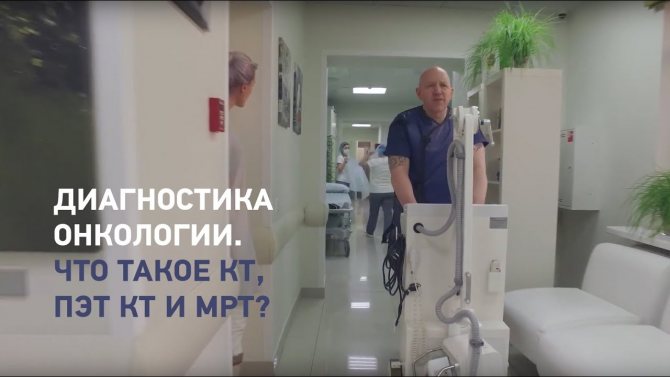
An idea of the extent of the lesion can be formed by the degree of narrowing of the duodenum during endoscopy. ERCP allows one to differentiate between cancer and chronic pancreatitis and even take material for cytology.
Endosonography will allow an accurate target to be placed at the biopsy site, which can only be abandoned when planning the operation. A biopsy is a fundamental diagnostic procedure that allows verification of cancer - objective evidence. If adenocarcinoma is suspected, it is possible to take a piece of the tumor in one of two ways: by endoscopy or by puncture through the skin.
The resolving power of PET/CT is maximum, but its limited availability allows it to be used only in cases of extreme diagnostic difficulty, when other methods have failed to either confirm or reject metastases.
The cancer marker CA 19-9 does not help in primary diagnosis - it is not specific, but its concentration in combination with the level of AFP can predict the appearance of metastases after radical surgery or evaluate the result of chemotherapy. Unfortunately, in every fifteenth patient, CA 19-9 not only does not reflect the course of the process, but also masks the tumor lesion, as it decreases due to insufficient enzyme production.
Essence and stages of its development
According to medical experts, pancreatic carcinoma is one of the most severe forms of cancer pathologies. This type of cancer is usually asymptomatic. And even in the active phase, when the disease progresses, the patient and doctors do not always correlate their condition with the indicated serious illness. Diagnosis of the disease is quite difficult, despite the multiplicity of metastases in neighboring organs. Quite often it happens that the appearance and growth of tumors occurs against the background of a decrease in the state of the immune system, the development of diseases such as chronic pancreatitis, and diabetes mellitus.
At the initial stage of development, there are no symptoms of pathology. Nevertheless, experts note the following signs that may indicate the occurrence of oncological processes at an early stage:
- Painful sensations arising in the hypochondrium, which can radiate to the back. Their intensity often increases at night.
- The appearance of redness of a particular vein located in the upper or lower extremities. Blood clots may appear in the veins. In this case, the limbs take on a bluish appearance.
- Sudden weight loss.
- Increased fatigue and general state of weakness.
All of these symptoms can be considered the first signs of the development of pathology. It is very important that every person, regardless of the presence or absence of any manifestations, undergoes a preventive medical examination at least once a year.
As oncologists note, there are 4 degrees of development of the disease, each of which has its own characteristic features:
- Stage 0 - does not show any symptoms. At this stage of the development of the disease, cancer cells have just begun to appear and can grow deep into the gland. If the disease is detected at this stage, then the chances of cure are 99%.
- Stage 1 - the tumor is located exclusively in the designated organ and does not exceed 2 cm in size. As practice shows, symptoms appear only when cancer cells are localized in the area of exit into the duodenum. In this case, patients may complain of a feeling of nausea and periodic diarrhea in the event of a violation of the diet.
- Stage 2 - characterized by the tumor leaving the gland and growing into the bile ducts and duodenum. In the second stage of development of the disease, the tumor can have different sizes. However, its cells are already being tracked in nearby lymph nodes. In this case, no additional symptoms appear. If stage 2 pancreatic cancer occurs, patients can only complain of weight loss, pain in the upper abdomen, vomiting and bowel dysfunction.
- Stage 3 - cancer cells have become quite widespread. They can already be found in the stomach, large arteries, colon and spleen.
- Pancreatic cancer, stage 4 of which is the most severe, is characterized by the presence of metastases in distant internal organs: brain, lungs, ovaries, etc.
Important information: Who is a pancreas transplant and how is it performed?
Treatment options
All adenocarcinomas of the gland can be divided into three large groups:
- operable from stages 1 to 3;
- doubtfully operable ;
- inoperable stage 4 and functionally not subject to surgery due to the severity of the patient’s condition.
However, it is a rare patient suffering from pancreatic cancer who never ends up on the operating table during the course of their illness. An operable tumor must be removed at the first stage; a non-removable tumor will require intervention to create a bypass of the bile ducts, or require unloading surgery for jaundice.
For adenocarcinoma of the head of the gland, an extensive and technically complex gastropancreaticoduodenal resection is performed; laparoscopic access is not excluded and is no worse than the classic one with dissection of the abdominal wall.
For adenocarcinoma of the body or tail, the affected parts of the organ and the spleen are removed, and the intervention is called “distal subtotal resection.”
In case of a conglomerate involving all parts of the gland, they resort to complete removal of the organ - pancreatectomy.
After radical surgery for stages 1-3, preventive chemotherapy is prescribed for six months, which is better to start in the next month and a half and no later than 3 months.

If operability is questionable, several courses of chemotherapy are given before surgery; if there is no change for the worse, then surgery is prescribed. Preventative - adjuvant chemotherapy should be six months along with preoperative chemotherapy.
With an initially inoperable stage 3 process, chemotherapy is carried out for several months, which can be aggravated by radiation; if everything goes well, then one can hope for radical surgery. If surgery remains unavailable after chemoradiotherapy, maintenance chemotherapy is prescribed for six months. Of all the morphological variants, only adenocarcinoma is the most sensitive to cytostatics, but the result leaves much to be desired.
In the metastatic stage, multicomponent chemotherapy is performed; treatment options are limited only by the patient's condition.
Stage 4 pancreatic cancer: features of the disease
If the cancer grows and extends beyond the pancreas, and the cancer cells disperse into separate organs and lymph nodes, then the doctor diagnoses pancreatic cancer in the fourth stage.
Full recovery is impossible for several reasons
: the pancreas and organs affected by the disease cease to function.
Drugs and surgical treatments are unable to fully utilize all methods to remove tumors and cancer cells, which does not allow complete elimination of the disease in the pancreas.
The main problem of this cancer is that in the early stages the disease makes itself felt with weak manifestations and is quite difficult to recognize.
Pancreatic cancer, like other types of oncology, has certain stages.
The stages of cancer include:
- At stage zero,
there are no symptoms in the body. However, cancer is already beginning to develop in the human body. It is impossible to do without surgery on the pancreas. - First stage
. Cancer is already visible using diagnostic methods. The size of the tumor is 2 cm. The operation can be performed successfully, and then the doctor creates a certain diet to prevent further manifestations of the disease in the pancreas. - Second stage
. The tumor is already clearly visualized and affects the lymph nodes, but there are no metastases. The doctor prescribes a course of chemotherapy and surgery, during which part of the organ is cut out, or it is completely removed. According to statistics, about 30 percent of people can live more than 10 years with cancer if they correctly follow the instructions of their treating specialist. - Third stage
. It is characterized by the fact that the tumor reaches such a size that it can affect nerves and blood vessels. Metastasis is not observed at this stage of cancer. After surgery, a person may develop other diseases. Therefore, every fifth patient needs a new operation within a year after the previous treatment. Treatment is carried out to relieve pain and prolong the patient’s life. - In the fourth stage
of cancer, a person experiences pain in the pancreas area. Metastases are already present in the body; surgery is not always indicated if this stage of the disease is diagnosed. Typically, treatment is based on maintaining normal health and prescribing a certain diet that can prolong life by several months or years.
The size of the resulting tumor often reaches five and sometimes six centimeters. They don't live with her for long. According to statistics, even 4% of patients cannot live more than five years.
Possible complications
Complications of pancreatic adenocarcinoma are mainly caused by the pressure of the tumor on surrounding structures and their involvement in the cancer conglomerate:
- the pain syndrome can be intense and require palliative radiation or blockade of the celiac (solar) plexus;
- compression of the common bile duct leads to jaundice and requires urgent restoration of patency with a stent, drainage, or creation of a bypass - anastomosis; radical surgery on the pancreas is performed only after normalization of the biochemical blood test;
- obstruction of the small intestine - a severe and life-threatening condition is resolved either by installing an expanding stent or bypass anastomosis;
- effusion into the abdominal cavity is treated by puncture - laparocentesis.
Diet regimen
If you choose the right diet for diagnosed stage 4 cancer, this will reduce the cancer intoxication of the body, the load on the gland and provide the person with the necessary energy to cope with the pathology. At the same time, the foods consumed must be high in calories, allowing them to replenish their reserves of vitamins and elements.
As part of diet therapy, experts give the following recommendations:
- Compliance with the principles of fractional nutrition, which means eating small portions at least 5 times a day.
- Processing of products only by steaming or baking with minimal use of fat.
- Reducing hot seasonings and spices in the diet.
Carbonated drinks, canned and pickled foods, and smoked foods should be completely excluded. It is necessary to cross out from the menu dishes that provoke increased gas formation and constipation.
The nutritional value of the food consumed is ensured by the consumption of cereals, casseroles, low-fat cutlets, eggs and cheese. The patient's menu must include 300 g of fruit, including apples, melon, watermelon, pomegranate, peach and apricots.
Important information: Consequences of pancreatic surgery
Fruits can be baked or consumed by adding natural yogurt to them. At the same time, the patient should reduce the consumption of sugar and sweets, since with this pathology the likelihood of developing diabetes mellitus increases significantly.
If the situation has developed in such a way that the patient refuses to eat, then the attending physician must be informed about this. In the most severe cases, the patient is given parenteral nutrition, which is necessary to maintain his condition.
Forecast
The prospects of a patient with pancreatic adenocarcinoma depend on several factors: the size of the tumor, the degree of its aggressiveness and sensitivity to cytostatics. Of all registered Russians, 67% die before they even live a year.
Today, every third person is observed for more than 5 years, but this group also includes those receiving treatment for relapse and metastases. The problem of disease relapse is quite acute; it is partly predicted by the high postoperative concentration of the CA 19-9 marker.
For pancreatic cancer, many treatment methods have been developed, which often conflict with the possibility of their use in a particular patient. A tiny tumor in a small organ located in the very center of the abdominal cavity, where the gastrointestinal tract and neurovascular tracts are intertwined, causes irreparable damage.
Management of such patients requires complex diagnostic methods and is impossible without active symptomatic therapy at all stages of antitumor treatment. Patients with pancreatic cancer are among the most difficult for an oncologist; our clinic knows this and knows how to help.
Book a consultation 24 hours a day
+7+7+78
Bibliography:
- Ed. HELL. Kaprina, V.V. Starinsky, G.V. Petrova / State of oncological care to the population of Russia in 2020 // M.: MNIOI im. P.A. Herzen branch of the Federal State Budgetary Institution "National Medical Research Center of Radiology" of the Ministry of Health of Russia, 2020.
- Bazin I.S., Pokataev I.A., Popova A.S. and others/ The place of chemotherapy in the treatment of localized pancreatic cancer // Zlokach. Tumors; 2016; Vol. 21, No. 4 (special issue 1).
- Patyutko Yu.I., Kudashkin N.E., Kotelnikov A.G. /Hepatopancreatoduodenal resection - are there any prospects? // Surgery. Journal named after N.I. Pirogov; 2011; No. 8.
- Pokataev I.A., Tyulyandin S.A. /Systemic drug therapy for metastatic pancreatic cancer// Modern. Oncology; 2016; No. 1.
- Raimondi S., Maisonneuve P., Lowenfels AB /Epidemiology of pancreatic cancer: an overview. // Nat Rev Gastroenterol Hepatol; 2009; V. 6, N 12.
- Von Hoff D., Ervin T., Arena F. et al. /Increased Survival in Pancreatic Cancer with nabPaclitaxel plus Gemcitabine. // N Engl J Med; 2013; V. 369.
Side effects
The effects of chemotherapy procedures are aimed not only at cancer cells, but also at healthy cells of various organs and tissues. As a result of chemotherapy, the bone marrow, hair, and mucous membranes of the gastrointestinal tract suffer.
On this topic
- Oncohepatology
What affects the prognosis for liver cancer
- Olga Vladimirovna Khazova
- July 9, 2020
Side effects may occur during chemotherapy. The most common ones include:
- nausea;
- vomit;
- lack of appetite;
- distorted taste sensations;
- dry mouth;
- rashes accompanied by unbearable itching;
- hair loss;
- bowel dysfunction;
- weakness.
The following complications may occur:
- numbness and pain in the upper and lower extremities;
- stomatitis;
- development of inflammatory processes in the intestinal mucosa;
- increased susceptibility to infections.
When bone marrow is suppressed, there is a decrease in hemoglobin and leukocytes. In some cases, the level of all elements of the blood fluid may drop. If chemotherapy is accompanied by the development of severe complications, the procedure is stopped for a while.
When taking Erlotinib simultaneously with Gemcitabine, the following negative reactions occur:
- diarrhea;
- bleeding from the nose and gastrointestinal tract;
- skin rash
- liver failure;
- inflammation of the eye cornea.
The severity of side effects is influenced not only by objective factors (the stage of damage to organs and tissues by toxic substances of cytostatics), but also by subjective perception. If, for example, a patient initially has a negative attitude towards chemotherapy, then he may experience more severe symptoms during the course of therapeutic measures. In such a situation, a consultation with a psychotherapist may be required.
Longmire Traverso resection
A more modern version of the operation is modified pancreaticoduodenectomy. It is carried out with the preservation of all tissues and parts of the stomach. It involves complete removal of the gland. The operation is complex and takes 4–6 hours to complete.
Indications:
- rapid progression of the cancer process with metastasis to the spleen;
- diffuse (multifocal) pancreatic cancer;
- malignant lesion of the head and body of the pancreas;
- tumor spread along the entire main pancreatic duct;
- suspicion of malignancy against the background of long-term, continuously relapsing chronic pancreatitis;
- a rare type of tumor;
- the inability to technically perform a safe connection of the pancreas with the jejunum.
Also, such an operation is prescribed in extreme cases, when a more gentle previous intervention did not stop the process or if the cancer has spread to the entire organ. The extremely rare use of this technique is due to:
- significant trauma;
- high intra- and postoperative mortality;
- high incidence of severe complications.
After complete resection of the pancreas, diabetes mellitus develops, which leads to lifelong treatment with insulin. The patient also needs constant enzyme replacement therapy, which is very difficult to tolerate. It has not been shown to improve survival compared with the Whipple procedure.
What causes a tumor to form?
An inoperable tumor does not appear immediately. Initially, one healthy cell degenerates into a malignant one, and over time it divides and multiplies, increasing the size of the tumor. As a rule, by the time it begins to manifest itself, radical surgery can no longer be performed.
The exact reasons for the degeneration of a healthy cell into an atypical one remain completely unknown.
But there are a number of factors that can trigger the onset of the disease, these include:
- the presence of chronic pancreatitis. The inflammatory process in the pancreas for a long time is accompanied by the appearance of free radicals in large quantities. Accumulating in an organ, they can cause degeneration of healthy tissues;
- improper diet, the predominance of unhealthy foods, mainly of animal origin and genetically modified products;
- penetration of chemical and physical carcinogens into the body through working in hazardous industries without proper protective measures or living in an environment of environmental disaster;
- alcohol abuse and smoking;
- genetic predisposition and the presence of mutational genes p53 and K-ras.


